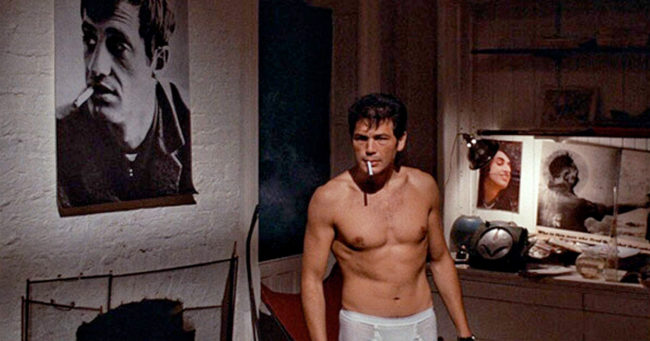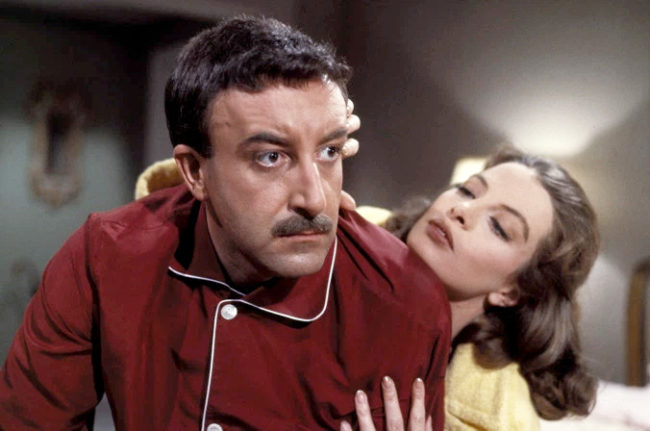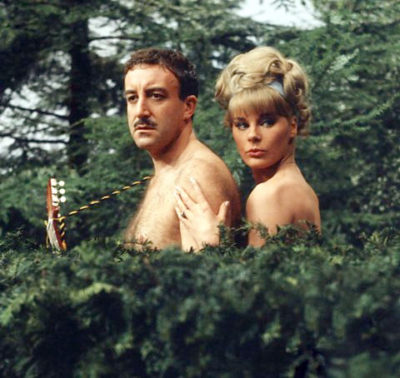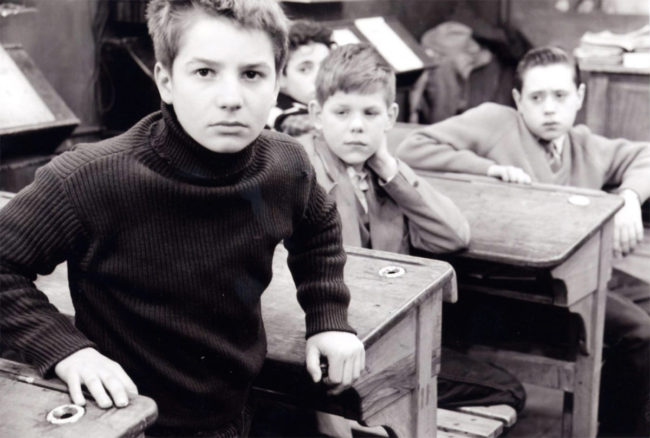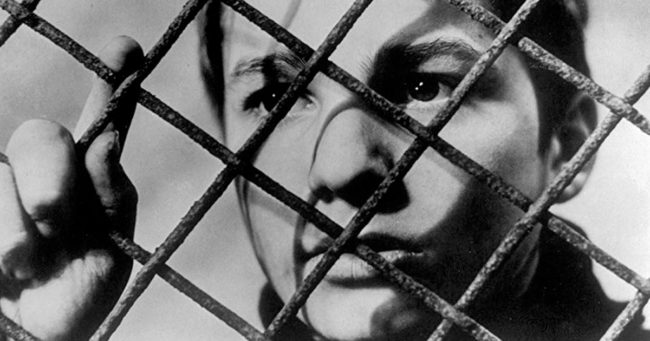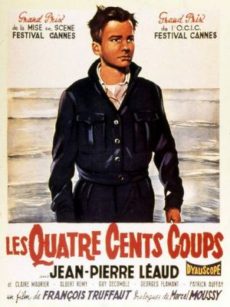On April 26 we’ll open Jeff Lipsky’s new film The Last, a powerful drama about the survivors of four generations of a Jewish family who are shaken to the core when the family’s beloved 92-year-old matriarch makes a stunning confession. Mr. Lipsky recently sat for an interview about the movie. (Warning, it contains spoilers below the first photo.)
Q. Describe the origin of this particular story. What was the inspiration, what was the catalyst, and what point did you decide that this was the next film you were going to write, and where did the idea come from?
A. Initially I’d written a movie called Abigail’s Surrender that I thought was going to be my next feature. It was a period piece, not too long ago, in the early to mid 70s, and it was set in a small town in Texas with stop-offs in Pennsylvania, Tennessee and New York. I fell in love with the script, I fell in love with the actress I had written it in mind for, she adored the script. Then I realized I can’t shoot this on a micro-budget, what was I thinking?! I had to come up with something way more affordable, something I was even more enraptured by, that was distinctive and yet fit into my overall oeuvre. My most successful film to date had been my most autobiographical film, which was Flannel Pajamas. I said let me dig a little deeper, maybe not autobiographically, but maybe biographically, and that’s when I hit upon the idea of my nephew, who was in his late 20s at the time. I have a niece and a nephew, my niece came first so my nephew always got sloppy seconds. I loved him but, in a way, he was a cypher to me; in writing this script I finally got to know him. He’s a terrific young man. He excelled in school, he graduated from college, he went and got his Masters and his teaching degree, and he became a teacher of special needs kids in Connecticut. I am immensely proud of him. What was interesting was…he grew up in a conservative Jewish household, as did I, but he tended to take religious studies and traditions a little more to heart, a little more seriously, a little more piously than any of us, and yet in a revolutionary fashion. He somewhat surprised the family – at least me – when seven years or so ago he merged or morphed, he shifted, from conservative Judaism to Modern Orthodox Judaism. He found it much more relevant than conservative Judaism in general, much more essential for Jewish connectivity, much more inclusive. Around that same time, he was fixed up with a young woman by his best friend and she’s terrific. She was Catholic yet, even as a young girl, expressed an avowed interest in Judaism. My nephew and she seemed to click as a couple. She expanded her knowledge of Judaism, immersed herself in study about Modern Judaism. They began living together. She decided to convert, a plunge she had always been considering making anyway. My nephew was the final catalyst. Then they decided to marry. For me the single most compelling facet, and most fascinating contradiction in their partnership was that my nephew, this Modern Orthodox Jew, who grew up in a centuries-old Jewish family, did not believe in a deity. He didn’t believe in God. She believed in God. A perfect couple! I thought they are the basis for two wonderful characters in a movie. A movie that could be shot in New York, set in New York, not Texas.
But I needed a story. I needed drama, I needed tension, I needed a through line, I needed a fiction to complement their fact. How could I incorporate something that happened eighty years ago into this contemporary story about two very contemporary Modern Orthodox Jews? My previous films had always been about family. They’d always been about multiple generations of family. So this time I thought that if I add one more generation, I’ve arrived at the Holocaust. But I wanted to do something interesting and provocative, with a twist yet utterly believable. That’s when I hit upon the character of Claire – a Holocaust survivor, somebody that everybody in this extended family knows as an escapee from Germany during World War II, who makes a life in New York as a Jewish woman, marries a Jewish man (we think!), and three more generations of her Jewish family ensue. Then I hit on the twist that would make this provocative, relevant, shockingly plausible. A story about a Holocaust survivor who has, in fact, been prevaricating, in a most shocking manner, about her entire life, and was, in fact, a member of the Nazi party. Someone who had the audacity to believe that any Jew, any person, should understand that if you put yourself in her position…wouldn’t you have also followed your literal savior to work at Auschwitz? The rest of it came very easily to me which is how were the surviving members of this extended Jewish family going to react to this information, this shattering and devastating confession delivered by a 92-year-old woman they’ve only ever known as the matriarch of the family, someone who represented Israel to them.
Best of all, in the process of writing the script, I discovered how singularly generous, selfless, giving, and scholarly my nephew and his wife were. She offered up her actual wedding gown to us for use by our co-star for prop photos! In fact, they permitted us to shoot at their apartment for two days…while she was eight and a half months pregnant. She delivered her daughter five days after we wrapped at the apartment. The film is dedicated to that child.
Q. What’s striking to me about the film and Claire’s character specifically is not that she’s a Nazi but that she’s unrepentant. I mean, she’s not quite marching in Skokie or Charlottesville or anything, but her position is “I did what I had to do to survive and you would’ve done it too.” When Olivia asks about her reaction to the footage of the camps being liberated, she says that it made her wish they, Germany, had won the war. She goes on to speak, not entirely without impact, about the plight of the German people in the aftermath of World War II. How do you create empathy for an unrepentant Nazi?
A. Once I hit on the bare outlines of the story, and conjured up the various characters who had to be included, painstakingly following a precise timeline, the ultimate insult and/or challenge to the youngest generation of Jews in the story (and perhaps to those watching the movie) would be a woman who begs them, who implores them to identify with her unique circumstances, trials and tribulations. But not with her circumstances during the Holocaust, not even during the Nazis’ rise to power in 1928 (before they became the official government of Germany in 1933), but before that. For that to happen, I had to create an unseen character and give her more biographical detail than perhaps any unseen character that’s ever been invented from whole cloth for a film. Her mother, Marta. A woman who was born in 1898, who loved Germany, who grew up an orphan, whose life was informed by music, who had to suffer all the degradations of World War I, lost the hearing in one ear as a consequence of the war, whose first pregnancy would result in a miscarriage, and who turns to prostitution when she finds herself destitute. During her second pregnancy when she discovers that her unborn child is in severe distress she learns of a young gynecology student, a star on the rise, near Hamburg, and she seeks his help. This man, this doctor, turns out to seemingly have a heart of gold and tries his damnedest to save Claire’s mother’s life, does in fact save the child’s life. Marta dies two weeks later, but before the mother dies, he makes her a deathbed promise. An irrational promise to make sure her baby doesn’t wind up a feral street urchin. Miraculously, he makes good on his word, he puts her in a quality foundling home. He makes sure she’s not abused there, makes sure she’s educated there. He makes sure she learns about the arts there and then, because she expresses a desire to be a nurse, gets her into nursing school at the age of fourteen. Two years later, at the height of the war, he asks her to come with him as his nurse to his newest assignment: Auschwitz. Given those circumstances, who in their right mind who would say no? As Claire unironically says, “It was the safest place I could be!”
Q. It’s certainly provocative to posit the idea that a particular Nazi’s crimes or misdeeds might be a form of self-preservation or altruism. As a Jew yourself, are you expecting a certain reaction from Jewish audiences that will see the film?
A. Absolutely. Not too long ago I distributed two Palestinian films directed by an Academy Award-nominated filmmaker, Hany Abu-Assad, born in Palestine, schooled in Israel. It wasn’t so much that there was backlash, there was an absolute, steadfast “I will not see this film because it was made by a Palestinian filmmaker” mindset on the part of many Jewish moviegoers. Jewish audiences, except when it comes to comic book type movies and tentpole blockbusters, are probably the most reliable, frequent movie theater-going audience in America. So when they take a stance like that, it’s a little scary. That said, at our rough cut screenings of The Last, we found that although there was a small percentage of conservative Jews clearly outraged by the film and this particular character, the Modern Orthodox Jews who came to see it, they got it. They understood it, they understood everything about it. Their astute editing room suggestions made it a better film. The more studious, the more historically-minded Jews who saw it, they got it. The ones who are caught up in the very aspects of conservative Judaism that the character of Josh disdains were the ones who occasionally had blinders on. I hope that no one sees Claire as a heroine or as someone you should lay down on the tracks for or express untampered empathy towards — as her own granddaughter in the movie says, to her dead mother when she visits her at the cemetery, “she [Claire] doesn’t even want to be forgiven.” And she doesn’t.
Q. Dr. Carl Clauberg was a real person, as was Horst Schumann, who’s mentioned as part of Claire’s history as well. Can you talk about the decision to insert real people into this otherwise fictional universe?
A. I thought some people would look at the fiction of our story and say “Well, that’s incredulous.” So I felt it was incumbent upon me to incorporate as many actual characters or actual events into Claire’s history, her mother’s history, to be able to say that enough of this really happened to make it an all-too-horrifying and plausible happenstance. I raced over to Barnes & Noble and started rifling through the books on the Holocaust and the concentration camps and very quickly – look, I knew I could use well known monsters. Everybody knows Josef Mengele, he is the quintessential Dr. Frankenstein of the Holocaust, the most monstrous medical figure of the Holocaust, but it would be a cliché to “import” him, I didn’t want to use him because then it becomes a melodrama. But there were others, more unknown but just as dementedly lethal, there were so many concentration camps, so many Josef Mengeles. I wasn’t looking for someone who toiled at Auschwitz necessarily, but the first one I found – whose actual fields of study were sterilization and progesterone studies and artificial insemination – happened to be this guy Carl Clauberg. And he happened to be a doctor who was assigned to Auschwitz. And he happened to be a gynecology student in a college outside Hamburg at a time when a desperate Marta might seek him out.
Q. Was there a lot of material about him – the real Carl – that you found?
A. There was enough. I wouldn’t call it a lot. I think it probably helped that I didn’t delve too much into his personal life or his life before the war, and his life after the war. But there was enough of a biographical sketch before the war to be able to, I think, imbue him with the proper dimensions to make him palpable for audiences.
Q. There’s this astonishing 45 minute sequence in the film that, contained within, features this monologue by Rebecca Schull where she reveals this history. Can you talk about the process of directing actors in a scene such as this?
A. Most of my direction for that scene, most of my work with Rebecca, took place weeks before the camera rolled. I spent hours with her in her apartment making certain she felt comfortable with every phrase I’d written, so on set the words were coming from Claire’s mouth, not Rebecca’s. Sometimes I would alter a word or clarify a phrase; her instincts when she made such a request were fairly spot-on. But once we began filming not a word in the script changed. Rebecca and I experimented with different accents for Claire until we came up with one that was faintly European but not quite readily identifiable. After all, Claire’s been living in New York for almost three quarters of a century. What Rebecca and I finally decided on was a variant of Lili Palmer, the Austrian Jewish actress who was born in 1914. It was Rebecca who found a perfect interview with Palmer on You Tube to use as a baseline. We had a dialect coach meet us for a few hours to make sure the German words and location Claire cites during her monologue, and prior to her monologue, flowed effortlessly. On set, we broke the monologue into eight parts, not so much to give this extraordinary thespian a break but to give my DP a chance to move the camera in, ever so slightly closer to Claire, so that what begins as a medium shot winds up being a tight close-up without the audience even catching on to what we’ve been doing. I’m sure Claire rehearsed the scene beforehand, many times, over many months. She thought, ‘how do I get these people whom I love and cherish, on my side, at least make them understand the circumstances.’ To do so she had to describe her own mother’s life, to give an oral recitation of her mother’s diaries. Once I realized that the monologue had to begin with Marta’s history – and given the research I’d done about World War II, about the rise of the Nazi party, about Germany between World War I and World War II, before World War I – since her mother had to have been born in 1898 – once I had the bare facts in my head, writing this monologue, the words just spilled out of me. I didn’t outline it or sketch it out, it was the easiest section of the movie to write and I can’t explain why or how. Perhaps it was because, by then, the one aspect of the film that I did know well was the character of Claire. I intuitively understood every fiber of her being at that point. Before I knew it, I’d written an eight page monologue. It wasn’t something I set out to do, to write to any particular length, I didn’t know how long it would last on-screen, I didn’t know how long it would take to film. Here I was, writing a monologue for a character who’s 92 years old.
Q. How long did the sequence take to shoot?
A. Three days. I should say it took three days minus three hours because on the first day, we arrived at the beach, in late summer, and encountered torrential rainstorms. We had intended to shoot the sequence chronologically but as a consequence of the weather we made a spur-of-the-moment decision to shoot the scenes in reverse. Yet all three performers still knocked it out of the park. How long would I have liked to have had to shoot it? Probably six days. How long would a Hollywood film have taken to shoot the same sequence? At least two weeks. At least. And that might be a conservative guesstimate. And they would have cast someone who was seventy and slathered a lot of makeup on her!
Q. Melody delivers the other notable monologue in the film.
A. She does. She addresses, head-on, the “missing generation” in the film. I wrote it, I loved it, but it’s so different than Claire’s monologue. At the beach, Claire would be speaking to two flesh and blood human beings. She was going to be able to look at these people, her great grandchildren, and be able to play off their ongoing, changing, and evolving reactions. Melody’s monologue is at her parents’ gravesite. She’s addressing a headstone. It was only after I cast Julie…I mean I didn’t know how I was going to film it, let alone how she was going to act it to a rock. When Julie first auditioned she was talking to “us.” And that’s when I came up with the idea that she visits the cemetery regularly, and talks to her dead parents often, and she herself is probably put off by the fact that she’s talking… these are not the people she remembers. She lives in a world where we have photographs of our parents and videos of our parents and iPhone selfies of our parents. So when she comes here, she arrives with a tape gun and two 8×10 color photographs of her parents, taken in the early 50s, and slaps them onto the headstone so at least she’s talking to the people she remembers. I thought that’s great, now I have reaction shots to cut to.
Q. This is your seventh feature?
A. Seventh, yes. Sixth as a writer, seventh as a director.
Q. When you make a new film, do you go in with a specific reaction that you’re hoping for? Something you’re looking to elicit?
A. I don’t go in looking for a particular reaction. No matter what the story is, I always try to write characters who are honest. Some of my characters may be shocking, they may do shocking things, but as long as I feel I’ve imbued the characters with honesty and naturalism, then some aspect of that person, and some element of the story is going to be universal, identifiable to people anywhere. That’s what I’m always shooting for. Do I think The Last might provoke? Yes. Do I think it might provoke copious questions from audiences? Probably more than any of my other movies. But it wasn’t a specific reaction I was looking for. Our copy line is “What would you do?” I suppose the copy line could’ve been “What would you have done?” That’s what Claire is asking. What would you have done in my position? That’s the question I would like all audiences to ask themselves, and I don’t think it’s answerable. In a perfect world, those lingering questions, will make them want to see it again. I love the characters in this movie, and, yes, I even love the character of Claire. Because she’s so singular. And in Olivia, Josh, Harry and Melody, I want people to see my characters as people they recognize from their own lives, from their friends’ lives. Is it possible to turn almost a century of abject love into rejection and hate virtually overnight? That’s the kind of response I want to elicit…from any of my films.

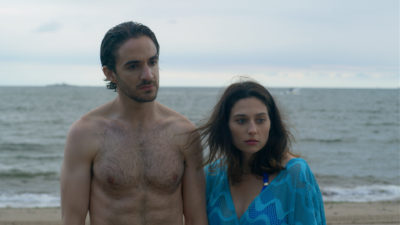
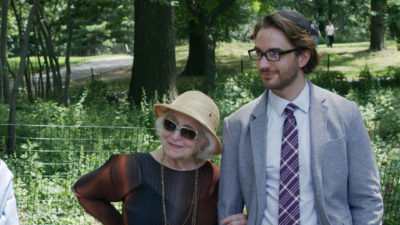
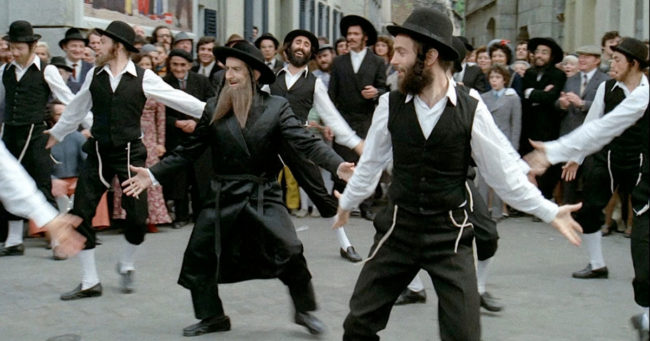
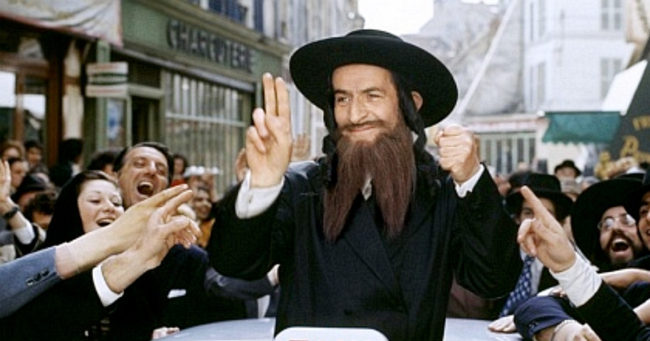

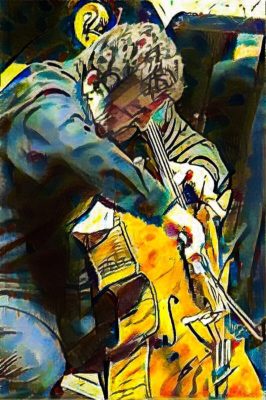 Armen has appeared as a soloist with the Nacional Orchestre du Brazil, Pacific Symphony, and Hollywood Bowl and Los Angeles Chamber orchestras, and regularly subs with the Los Angeles Philharmonic. He is a member of several ensembles including The Catgut Trio, The Rio Trio, California String Quartet and the award-winning Armadillo String Quartet, with whom he performed Haydn’s complete string quartets in a 34 ½ hour marathon. He made his Carnegie Hall debut premiering a quartet by PDQ Bach in 1999 and has appeared in the Cabrillo, Colorado, Banff, Sitka Summer, Oregon Bach, High Desert, Park City and Venice Film festivals; the Rio International Cello Encounter and Jasper Festival of Music and Wine.
Armen has appeared as a soloist with the Nacional Orchestre du Brazil, Pacific Symphony, and Hollywood Bowl and Los Angeles Chamber orchestras, and regularly subs with the Los Angeles Philharmonic. He is a member of several ensembles including The Catgut Trio, The Rio Trio, California String Quartet and the award-winning Armadillo String Quartet, with whom he performed Haydn’s complete string quartets in a 34 ½ hour marathon. He made his Carnegie Hall debut premiering a quartet by PDQ Bach in 1999 and has appeared in the Cabrillo, Colorado, Banff, Sitka Summer, Oregon Bach, High Desert, Park City and Venice Film festivals; the Rio International Cello Encounter and Jasper Festival of Music and Wine.

